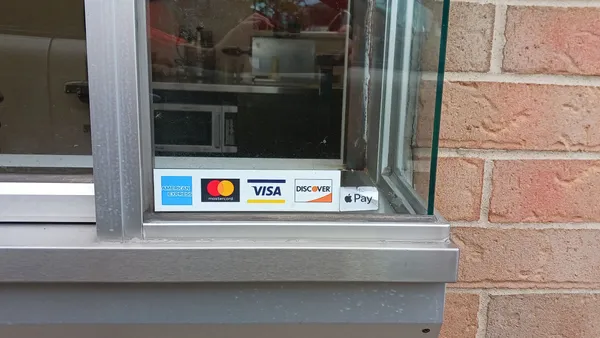Developing a forward-looking organization starts at the top. And when crafting strategies that can both create this future-forward perspective while capturing sales today, it’s important to consider modernizing the virtual payment structure.
By addressing the payment stack, the C-Suite can see significant direct benefits as well.
In a survey of 500 US merchants conducted by Oxford Economics and Checkout.com, 64% said that their payment strategy played a critical role in increasing revenue over the past 12 months. And 63% also said that it would play a critical role over the next decade. With 30% of businesses in the survey saying that online payments account for 71% to 80% of total revenue, it’s clear there’s room for improvement.
But one area where the improvement could have great impact is within the offices of the chief executive, chief financial officer (CFO) and chief marketing officer (CMO). By understanding the impact that the payment system has on each position, it highlights the broader effect such a payment platform can have on the entire organization, which the C-Suite recognizes. Nearly 70% (69%) of respondents said the C-Suite understands the value of payments to the business.
The office of the CEO
When evaluating the future of the organization, a CEO looks for advantages today that can continue to reap benefits for years to come. Modernizing payment systems can provide such competitive advantages, through building a valuable customer experience, increasing efficiencies within the organization and incorporating data from the platform, to build insights that will grow profits.
These benefits can have significant ripple effects. For instance, building a superior customer service experience lowers the costs of transactions. At the same time, it reduces tech debt burdens. Both reduces overall costs of the organization, improving the bottom line.
“Harnessing payment data has allowed us to strategically align payment experiences, improve payment transaction performance and strengthen fraud detection measures, resulting in increased order conversion rates and seamless settlement of transactions,” said Kelsey Dowling, senior staff technical product manager at GE Healthcare.
But it stretches further than that. The CEO must worry about reputational and legal risks for the organization. A powerful payment system that can adapt to the various regulatory requirements across the globe, reduces the potential that your company could face a lawsuit due to a subtle legal difference in a certain jurisdiction you operate in. This not only reduces legal risk, but also shelters the company from reputational damage that can arise from such public drama.
The office of the CFO
A modern payment system will have two valuable characteristics that CFOs will find extraordinarily useful: automation and instant payment processing.
The instant payment processing ensures that the business has access to the sale faster. By doing so, it results in stronger free cash flows, improving liquidity in the process. For the financial arm of the business, this can impact the tactics and strategies the CFO devise to improve their office or the entire organization.
At the same time, the automation allows the business to reduce transaction costs. Meanwhile, the office of the CFO becomes more efficient since there’s less need to do manual work, ensuring that the sales have been captured correctly – which also reduces human errors that might arise in the process.
But a CFO also has another role: looking outward for the business. The automated, instant processing allows CFOs to consider new revenue streams and markets due to the efficiencies built into capturing current cash flows. They’re not bogged down or preoccupied with the mundane tasks and with a flexible system it allows the CFO to look towards the future.
The office of the CMO
Data has become a vital resource to the marketing space. With the right customer insights, teams can build valuable marketing campaigns that reach the intended audience with impressive results. The value that the payment platform brings to the CMO can be priceless, since marketing teams can evaluate numerous pre- and post-purchasing behaviors that detail why customers come to the organization, how they shop and why they buy.
The CMO team can then incorporate these insights, whether it’s buying behavior or geographical trends, into their marketing plans. It creates more targeted campaigns, which allow for stronger results.
Modernizing the platform goes further for CMOs, since the value of the campaign, inevitably, comes from the sales. With a payment system that enhances customer experience and increases conversions, the marketing team doesn’t have to worry that their efforts will go to waste. Instead, they have a partner in the campaign, improving results.
“One message I’d stress is that it’s not just the backend of payment processing that can cause issues,” said Justin Kim, vice president of product at Vimeo. “Some aspects of the customer experience, like elements of the checkout page, may also be driving negative payment performance. And improving them can improve payment performance.”
Other offices
As online payment systems become more valuable for the main operations of the organization, it impacts all areas of the business. Leaders from across the C-Suite will see benefits, dependent on their focus and area of concern.
For instance, chief operating officers (COO) see improvements in real-time analytics, allowing them to evaluate the processes within the business using fresh figures and insights. And digital infrastructure is easier to scale, which allows them to build more efficiently. Meanwhile, the chief technology officer (CTO) benefits from the infrastructure design as well. And, when integrated with software-as-a-service applications, they can enhance backend services and build customized options.










